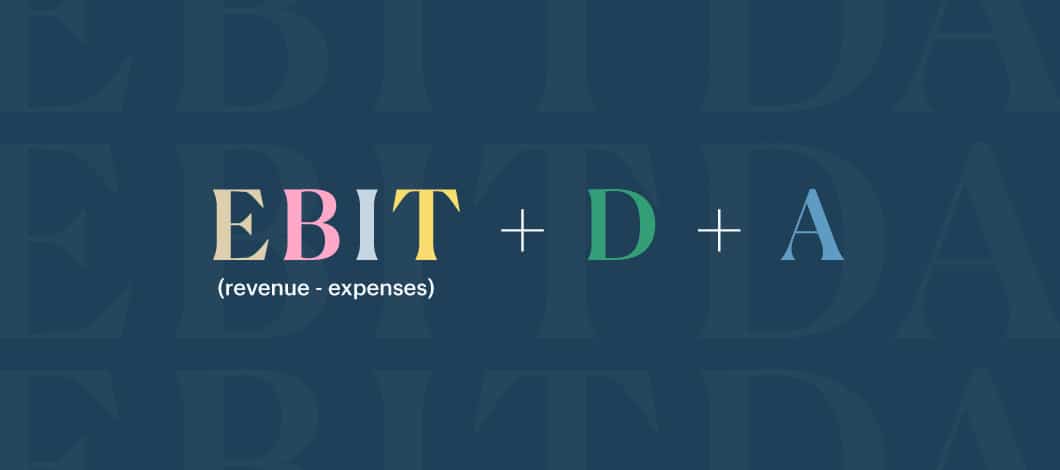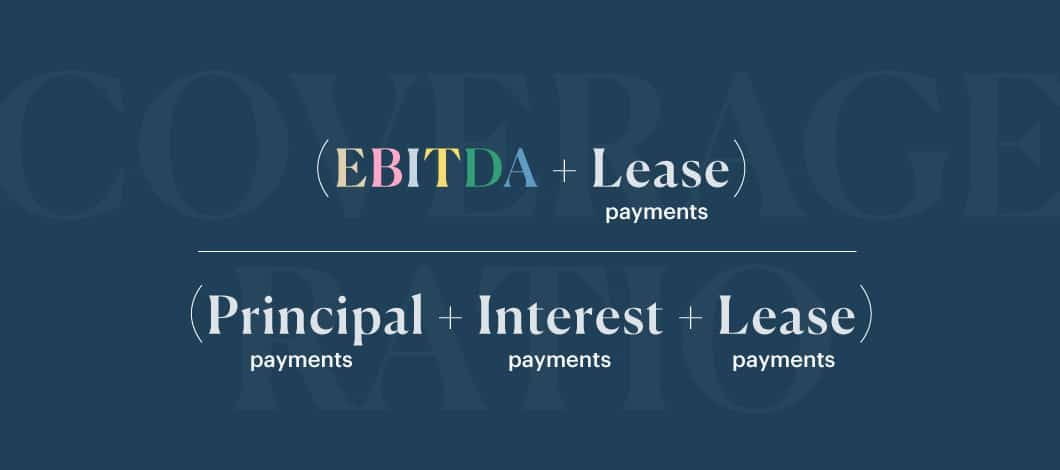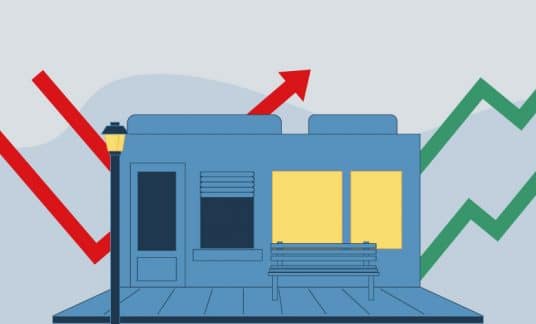Of the million acronyms that small business owners have to keep in mind, EBITDA might be the most important of them all. An abbreviation for earnings before interest, taxes, depreciation and amortization, EBITDA is a proxy for a company’s operating profitability.
To help you find out what the EBITDA formula is, we put together this quick how-to guide that demystifies the process.
What Is EBITDA?
Aside from your company’s income statement, EBITDA is one of the best indicators of operational performance for a small to medium-sized business. Debt financing is stripped out of the figure, so EBITDA shows only how profitable your company is based on its core operations.
In other words, your company’s EBITDA calculation tells investors and creditors how profitable your business is if it holds large sums of debt or fixed assets. Because EBITDA factors out non-operating expenses (i.e., interest and depreciation), it gives you a clear picture regarding your business’s cash flows.
EBIT vs. EBITDA
EBIT, your Earnings Before Taxes and Interest, is your business’s earnings before interest and taxes.
EBIT measures profitability by calculating earnings before interest and taxes; this method is preferable when evaluating companies with high capital expenditures.
EBITDA is a measurement of income that contains more relevant information about your business’s profitability than revenue, operating income or cash flow alone. This is determined by quantifying your company’s operating performance—or, in other words, your profits after the cost of goods sold (COGS) —before non-operating items such as interest expenses.
In doing this, calculating EBITDA allows for more accurate apples-to-apples comparisons of similar firms because it rules out capital expenditures and accounting decisions. Therefore, EBITDA offers a glimpse into your company’s baseline profitability.
EBITDA Meaning
Let’s break down each letter in EBITDA to give you a sense of the definition, what each component means and why the EBITDA formula does (or doesn’t) factor it into the equation.
Earnings
Knowing how to find EBITDA begins with knowing your earnings. Make sure you’ve memorized —or at least know how to find—how much your company has earned in profit or income over the past year or quarter. Gross earnings are the foundation of how to calculate EBITDA.
Interest
Any interest payments you make on credit or loans falls under this category. Specifically, net interest, which is interest income subtracted by interest expenses if you happen to earn interest on your investments.
Taxes
This refers to the dollar value of federal and state taxes that your company is required to pay under the law. Other business taxes, including payroll tax, property tax and city or local taxes are considered operating expenses and not factored into taxes in your EBITDA formula.
Depreciation & Amortization
Depreciation and amortization (D&A) refer to the lost value on fixed assets (e.g., a company vehicle) over time. Tangible assets experience depreciation, while intangible assets (e..g, patents) amortize because they are only useful until their predetermined expiration time.
While D&A figures in your EBITDA are included on cash flow statements, you can calculate your company’s asset depreciation and amortization using the straight-line method.
-
Why EBITDA Is So Important
When evaluating your company’s performance, your EBITDA is one of the greatest evaluation tools in your arsenal—up there with your cash flow statement, operating cash flow and income statement.
If your EBITDA is trending downward year after year, this sends a bad message to investors and creditors. To secure the trust of lenders, keeping your EBITDA in the green every year is crucial. Otherwise, you might be disqualified for loans, lines of credit or other financing.
Calculating EBITDA The Right Way
So, how do you calculate EBITDA?
The best course of action is to start by calculating EBIT. This figure is found on every business’s income statement, as it is simply revenue minus expenses. If you can’t find your EBIT, you can do so manually by subtracting your expenses (other than taxes and interest) from your sales revenue.
For example, a consulting firm with $4.5 million in revenue but $500,000 in expenses has an operating profit (EBIT) of $4 million.
Once you’ve found your EBIT, sum up expenses due to the depreciation of your tangible assets, such as vehicles or properties. These losses are recorded in every company’s cash flow statement. Then, find the amortization expenses on the profit-and-loss report section of your cash flow statement and record this value.
Now, you’re ready for some basic arithmetic. To calculate EBITDA, simply take your EBIT figure and add the depreciation and amortization values you found on your cash flow statement. A basic EBITDA example can be found below:
EBITDA = $4 million (EBIT) + $100,000 (D) + $75,000 (A) = $4,175,000
EBITDA at a Glance
Here’s a quick breakdown of the EBITDA formula steps:
- Subtract non-tax and interest expenses from revenue
- Record depreciation expenses of tangible assets from cash flow statement
- Record amortization expenses of intangible assets from cash flow statement
- Add D&A expenses to the original sum (EBIT) to find EBITDA
An Alternative EBITDA Formula
Another option for how to calculate EBITDA is to take your company’s net income and then add in the other variables (i..e, taxes, interest, depreciation and amortization). The EBITDA example below can help you quickly calculate EBITDA if all other expense information is known.
Take, for instance, a company with a net income of $1 million. Then, add in the EBITDA interest expense payments ($200,000), taxes ($400,000), depreciation ($225,000) and amortization ($100,000). With these variables plugged into the formula, your EBITDA should look like this:
EBITDA = $1 million + $200,000 + $400,000 + $225,000 + $100,000 = $1,925,000
What Is Your Coverage Ratio?
EBITDA alone doesn’t tell the whole story. This is where your EBITDA coverage ratio comes in handy because it compares your EBITDA to your debt and lease payments—in other words, your liabilities.
The benefit of using a coverage ratio is that it can determine whether your business has the means, given its level of profitability, to make reliable payments on your debt.
A higher coverage ratio implies that you’re effectively managing your company’s debts. Your EBITDA coverage ratio, if it is over 1.0, indicates that your business’s finances are sustainable and signals to investors and creditors that you can pay down your debts reliably.
A poor EBITDA coverage ratio (1.0 or lower) might negatively affect your credit score and might even be a deciding factor in whether your business qualifies for a loan or line of credit.
Calculating Your Coverage Ratio
Once you know how to calculate EBITDA, you should take the time to master calculating EBITDA coverage ratios. The formula is straightforward, and is listed below:
(EBITDA + Lease Payments) / (Principal Repayments + Interest Payments + Lease Payments)
To clarify the formula, let’s assume the following figures for a small business:
- Net income: $250,000
- Interest expenses: $20,000
- Taxes: $70,000
- Operating profit: $160,000
- Depreciation: $20,000
- Amortization: $10,000
- Lease payments: $100,000
- Principal repayments: $50,000
Based on the figures listed above, this company has an EBITDA value of $190,000. Once we plug in the above numbers to the coverage ratio formula, we get the following equation:
($190,000 + $100,000) / ($50,000 + $20,000 + $100,000) = $290,000 / $170,000 = 1.7
This fictional company has a coverage ratio of 1.7, which indicates that it’s able to make debt payments, although it falls slightly short of the average coverage ratio of 2. Ideally, businesses should aim for a ratio north of 2.
EBITDA Margins
Last, you need to know how to calculate your EBITDA margin, which measures your company’s operating performance as a percentage of your total revenue. Put simply, an EBITDA margin takes your cash profits each year and measures it up against your overall sales—this is another way of measuring performance.
Understanding how to calculate EBITDA margin is a matter of following the basic EBITDA margin formula listed below:
EBITDA Margin = EBITDA / Total Revenue
Assuming a company has an EBITDA of $190,000 and total sales revenues of $500,000, then the EBITDA formula margin would be as follows:
$190,000 / $500,000 = .38
Therefore, this company is able to convert 38% of its revenue into profit over the course of the year. As with coverage ratios, the higher your margin number, the better. A higher margin number provides even more evidence that the company is financially healthy and likely to be able to repay debts.













